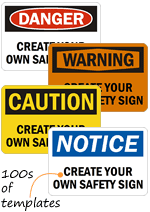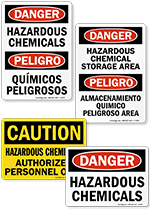Carbon Monoxide poisoning at home: The silent killer
Frayed or worn out electric chords, wet floors, fireplaces without mesh screens, and smoking in bed are some safety hazards at home that are easy to identify and fix. However, another hazard is lurking in our homes, invisible, and far more dangerous.
Recently, Walker Sandford, a property management firm in Glasgow, Scotland threw light on the dangers of carbon monoxide poisoning at home. According to an official press release, “Over 30,000 people have been affected in the UK by Carbon Monoxide (CO) since 2005.” Company founder, Paul Walker, terms the gas as, “UK’s most common poison,” which is responsible for around 50 unintentional deaths every year.
The threat of carbon monoxide poisoning is not confined to the UK. The US Center for Disease Control and Prevention reports, “Each year, more than 400 Americans die from unintentional CO poisoning, more than 20,000 visit the emergency room, and more than 4,000 are hospitalized.”
Incomplete combustion of any fuel such as gas, kerosene, oil, propane, natural gas, wood, or charcoal results in carbon monoxide emission. Stoves, cars, lanterns, gas ranges, portable generators, lawn mowers, power washers, heating systems, etc. are the common sources of CO in and around our homes. Carbon monoxide can build up to alarming concentrations indoors, when ventilation is inadequate and fuel-burning devices are improperly maintained.

See this sign here.
Carbon Monoxide: A Silent Killer
Many of the initial carbon monoxide poisoning symptoms, like headache, dizziness, weakness, nausea, vomiting, chest pain, etc. are not very severe. People often mistake these symptoms for flu, food poisoning, and other illnesses. United States Environmental Protection Agency (EPA) says, “You can’t see or smell carbon monoxide, but at high levels it can kill a person in minutes.”
Below are some things you can do to prevent the risk of carbon monoxide poisoning at home:
- Check that your gas equipment carries the seal of a national testing agency, such as the CSA Group.
- Install and operate appliances according to the manufacturer’s instructions and local building codes.
- Ensure yearly servicing of your heating system, chimneys, water heater and any other gas, oil, or coal burning appliance by registered technicians.
- Do not block ventilation. Keep sources of ventilation free from vegetation.
- Avoid using portable flameless chemical heaters (catalytic heaters) and charcoal grills indoors.
- If you detect an odor from the refrigerator’s cooling unit, get it serviced immediately.
- Install a carbon monoxide detector/audible carbon monoxide alarm at your home. A CO alarm that meets the requirements of current UL 2034 safety standards, works best.
Carbon Monoxide Detectors

A typical CO alarm [Image via Wikimedia Commons]
If a carbon monoxide alarm goes off at home, the United States Consumer Product Safety Commission (CPSC) recommends doing the following:
- Immediately move outside to fresh air.
- Call 911 or your local fire department.
- Ensure that everyone is out. Do a head count to check that all persons are accounted for. DO NOT reenter the premises until emergency services responders have given you permission. You could lose consciousness and die if you go inside the home.
- If the source of the carbon monoxide is determined to be a malfunctioning appliance, DO NOT operate that appliance until it has been properly serviced by trained personnel. [Source: CPSC]
Medical Advisor for Carbon Monoxide Awareness, Dr Ed Walker says, “It (CO) is lethal and highly toxic even in small amounts, yet is commonly found in homes and workplaces all over the world. As a society we are probably less aware of its dangers than we were 50 years ago.”
Category: Chemicals, Safety Tips













